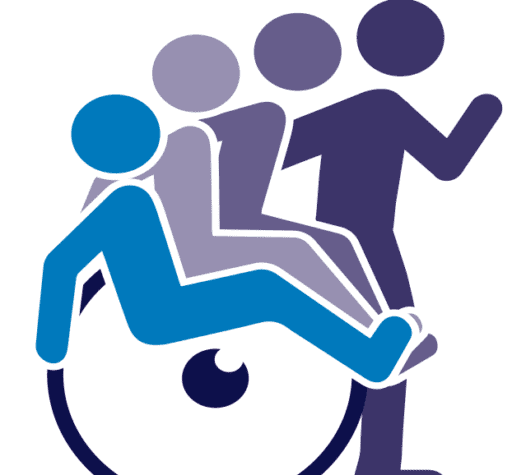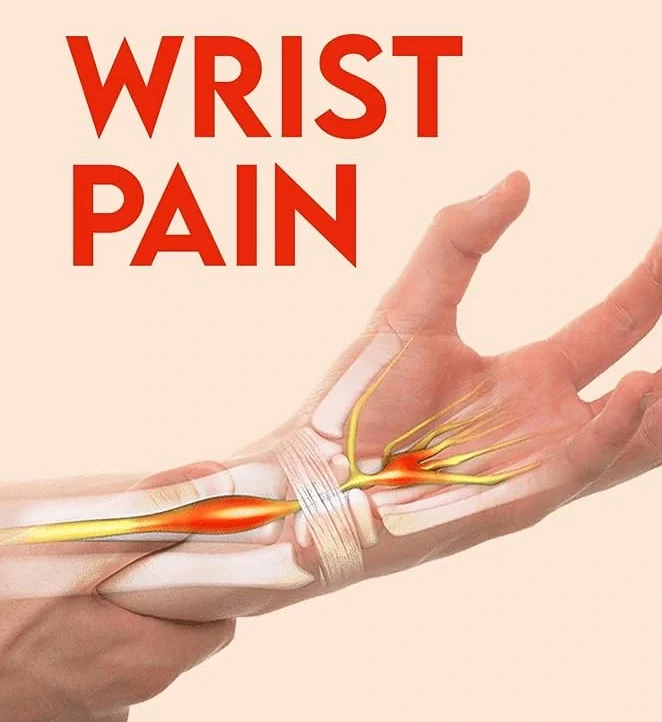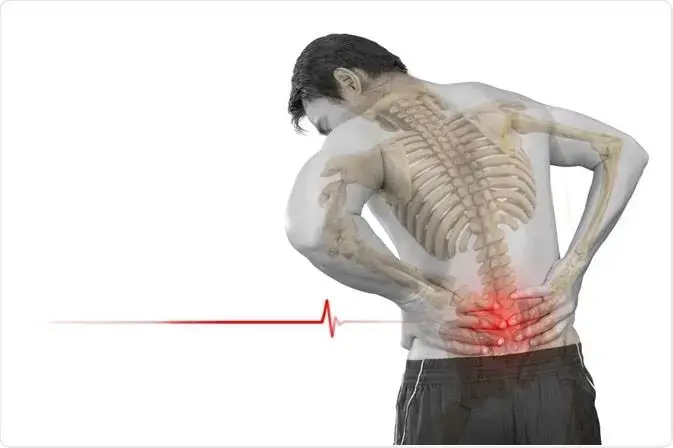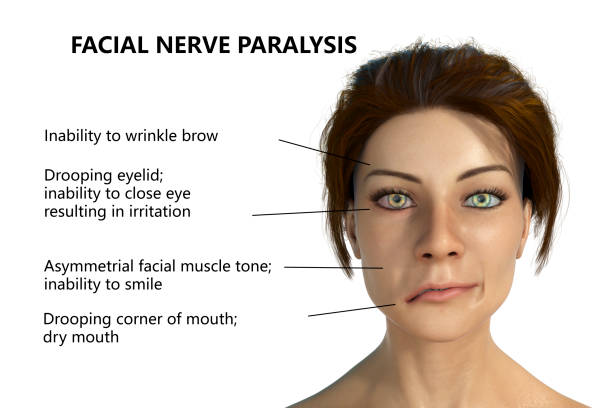Wrist Pain
Wrist pain is a common condition that can result from injury, overuse, arthritis, or underlying medical conditions. It may cause discomfort, swelling, stiffness, or difficulty in performing daily activities that involve hand and wrist movement.
Common causes of wrist pain include sprains or fractures from unexpected incidents. However, problems that don’t go away, like carpal tunnel syndrome, arthritis, and overuse injuries, can cause wrist pain.
It might be difficult to determine the exact cause of wrist pain because there are so many potential contributing variables. However, a precise diagnosis is necessary for both recovery and successful therapy.
Table of Contents
What Is Wrist Pain?
Wrist pain refers to discomfort or aching that occurs in the wrist joints. Your wrist’s complicated joint consists of:
- Bones.
- Muscles.
- Nerves.
- Tendons
- Ligaments.
- Blood vessels.
There are several accidents and medical disorders that might cause wrist pain.
Location For Wrist Pain
The side of your wrist that hurts may be used by a medical professional to categorize your wrist pain:
Ulnar wrist pain: Injuries affecting the side of the wrist that corresponds to the ulna, one of the forearm bones, are referred to as ulnar wrist pain. Your pinkie finger is located on the ulnar side.

Radial wrist pain is experienced on the side of the wrist next to the radius, the other forearm bone. The radial side corresponds to where your thumb rests.
No matter which side of your wrist pain is coming from, a medical professional will identify and treat the underlying problem.

Causes Of Wrist Pain
You may experience pain and have trouble using your wrist and hand if any of its components are damaged. Damage might be caused by:
- Sudden impacts
- Repetitive stress
- Osteoarthritis
- Rheumatoid arthritis
- Carpal tunnel syndrome
- Ganglion cysts
- Kienbock disease
Unexpected impacts: Falling forward into an extended hand is one of the most common ways that wrist injuries occur. Fractures, sprains, or strains may result from this. Scaphoid fractures, which damage the thumb side of the wrist bone, might not show up on X-rays very far away after the incident.
Repetitive stress: Activities involving repeated wrist movements can cause stress fractures or inflammation in the tissues around the joints. Examples include long-distance driving, playing the cello, and hitting tennis balls. The risk of damage increases when these tasks are performed for a long time without pauses. As an example, consider de Quervain tenosynovitis, a repetitive stress condition that results in thumb base pain.
Osteoarthritis: Osteoarthritis in the wrist typically affects individuals who have sustained a prior wrist injury.
Rheumatoid arthritis is an inflammatory disorder in which the body’s immune system mistakenly attacks its own tissues. It frequently affects the wrists.
Ganglion cysts: These are soft, fluid-filled lumps that can develop on the back of the wrist, between the palm and the back of the hand. The pain caused by ganglion cysts can be quite severe, and physical activity could either help relieve or worsen the discomfort.
Kienbock disease: A little wrist bone gradually breaking down is a sign of Kienbock disease, which typically affects younger people. This problem happens when the bone doesn’t get enough blood.
Symptoms Of Wrist Pain
- The causes of wrist pain might differ.
- Carpal tunnel syndrome commonly causes a pins-and-needles sensation, especially at night, affecting the thumb, index finger, and middle finger.
- The exact position of wrist pain can also be used to identify its cause.
Risk Factors of Wrist Pain
Anyone can have wrist pain, regardless of their level of activity or lifestyle. However, the danger might be raised by:
- Sports participation
- Repetitive work
- Certain diseases or conditions
Sports participation: In many sports, wrist injuries are prevalent, whether they are caused by repeated wrist tension or collision.
Repetitive work: The wrists can hurt from almost any repeated action that uses them. If done too frequently and with enough power, even simple tasks like knitting and hair cutting can cause severe wrist pain.
Certain diseases or conditions: Carpal tunnel syndrome is more likely to occur in people with gout, diabetes, obesity, rheumatoid arthritis, and pregnancy, among other illnesses.
When To See A Doctor?
- If your wrist pain worsens over time or lasts longer than a few days, seek medical advice. Additionally, you should see a physician if you have any of the following symptoms:
- You can’t move your hand, wrist, or fingers.
- Painful tingling in your wrists or forearms.
- Swelling or changes in color affecting your wrists, forearms, fingers, or hands.
- Wrist pain that continues for over two weeks after beginning treatment.
Wrist Pain Video
Treatment
The cause of your wrist pain will determine which treatments you require. For wrist pain, you might be able to try home remedies. A medical professional will advise you on available treatments and evaluate the duration of your requirement.
- Rest
- Icing
- Anti-inflammatory medication
- Ergonomic
- Physical therapy
- Immobilization
- Surgery
Rest: If you have an injury to your wrist, you can allow it to heal by taking a break from your job, hobbies, or athletic activities.
Icing: Use a cold compress or ice pack for ten to fifteen minutes many times a day. Wrap the ice pack in a towel or washcloth rather than placing it directly on your skin.
Anti-inflammatory medication: Pain and swelling are reduced with over-the-counter nonsteroidal anti-inflammatory medicines (NSAIDs), including ibuprofen or naproxen. The doctor may also recommend corticosteroids, which are prescription drugs used to treat inflammation.
Ergonomic adjustments: Repetitive actions can be made less stressful on the wrist by shifting the position of your hand.
You can improve the strength and flexibility of your wrists by doing wrist exercises with the assistance of a physical therapist.
Immobilization: A brace, splint, or cast may be required to keep your wrist stable and reduce strain while it heals.
Surgery: In order to cure arthritis, correct fractures, repair tendon or ligament tears, remove a growth, or relieve nerve compression, surgery may be necessary. Both arthroscopic and open wrist surgery are possible.
Physical Therapy To Relieve Wrist Pain
- Stretching
- Range Of Motion
- Strengthening
Stretching:
The wrist extensor and wrist flexor stretches. Starting with your arm straight out in front of you, you may perform both of these exercises, which are beneficial for the majority of wrist pain sources.
The wrist flexor stretch:
- Raise your palm up.
- Bend your wrist downward towards the ground while keeping your fingers straight.
- To increase the stretch, lightly press your fingers down with your other hand. Your forearm should be mildly to moderately stretched.
- After 10 to 20 seconds of holding the stretch, release
Wrist extensor stretch:
- Keep your palm facing the floor.
- Bend your wrist down while maintaining straight fingers.
- Apply a little pressure to the back of your hand with your other hand to increase the stretch’s depth. Your forearm should be mildly to moderately stretched.
- After 10 to 20 seconds of holding the stretch, release.
Range of Motion Exercise:
During these workouts, you will practice the various wrist motions:
Flexion: Bend your wrist forward for five seconds.
Extension: To extend, tilt your wrist back and hold it there for five seconds.
Side to side: This movement resembles the wrist motion you might employ, for instance, to clean a table. Spend a moment on each side rather than moving fast.
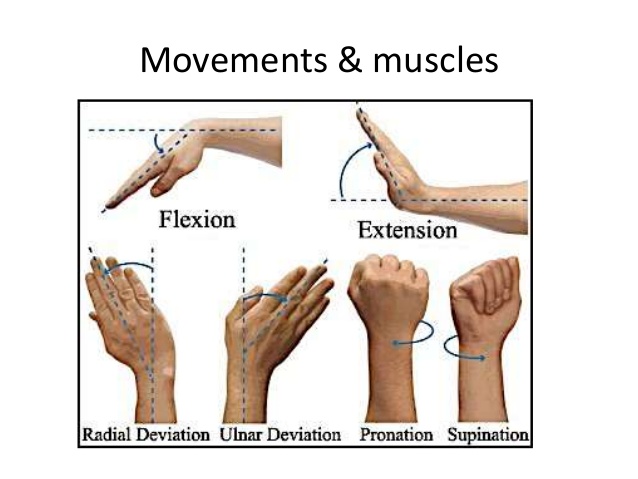
Strengthening:
Weighted Wrist Extension:
- To extend your wrists with weight:
- Using the hand that has been affected, hold a can or a weighted handle.
- Place the item palm down in your hand.
- Raise your hand and carefully bend your wrist to get it to its starting position.
- Perform three 10-rep sets.
Weighted wrist flexion:
- Not everyone is a good fit for this activity, so know that before you start.
- Weighted wrist flexion is generally not recommended for those with carpal tunnel syndrome. The median nerve may get irritated by excessive compression during wrist flexion.
- To do a weighted wrist flexion if you do not have carpal tunnel syndrome, follow these steps:
- With the object positioned upwards, lift your wrist and then gently return it to the starting position.
- Increase the object’s weight gradually over time.
Prevention
- Build bone strength
- Prevent falls
- Use protective gear for athletic activities
- Pay attention to ergonomics
Summary
- Numerous factors can contribute to wrist pain, ranging from excessive computer use to more severe ailments like rheumatoid arthritis or Kienbock’s disease.
- Talk to your doctor about any chronic wrist pain you may be experiencing.
- Most wrist issues can be treated with surgery, splints or casts, exercises, over-the-counter drugs, or a combination of these.
FAQ’s
Frequently, sprains or fractures from unexpected incidents result in wrist pain. However, chronic issues, including arthritis, carpal tunnel syndrome, and persistent stress, can also cause wrist pain. Finding the exact cause of wrist pain might be challenging because there are so many possible causes.
A lack of calcium, vitamin D, or vitamin B12, among other things, might cause wrist pain. Insufficient vitamin D may cause joint pain by reducing bone strength and impairing calcium absorption. Nerve pain and tingling, notably in the wrists, can result from a vitamin B12 deficiency. A calcium deficiency is another factor that may lead to wrist pain and spasms.
For people who have wrist and hand issues, doing daily chores can become excruciating and irritating. Physical therapy can assist in restoring strength, flexibility, and reducing pain, whether you’re suffering from carpal tunnel syndrome, arthritis, or a wrist injury
References:
- Wrist pain – Symptoms and causes. (n.d.). Mayo Clinic. https://www.mayoclinic.org/diseases-conditions/wrist-pain/symptoms-causes/syc-20366213
- Professional, C. C. M. (2025d, May 28). Wrist pain. Cleveland Clinic. https://my.clevelandclinic.org/health/symptoms/17667-wrist-pain
- Phillips, N. (2025, April 28). Possible causes of wrist pain and treatment tips. Healthline. https://www.healthline.com/health/wrist-pain
- Clinic, C. (2025c, June 17). 11 Exercises and stretches for wrist pain. Cleveland Clinic. https://health.clevelandclinic.org/wrist-pain-exercises
